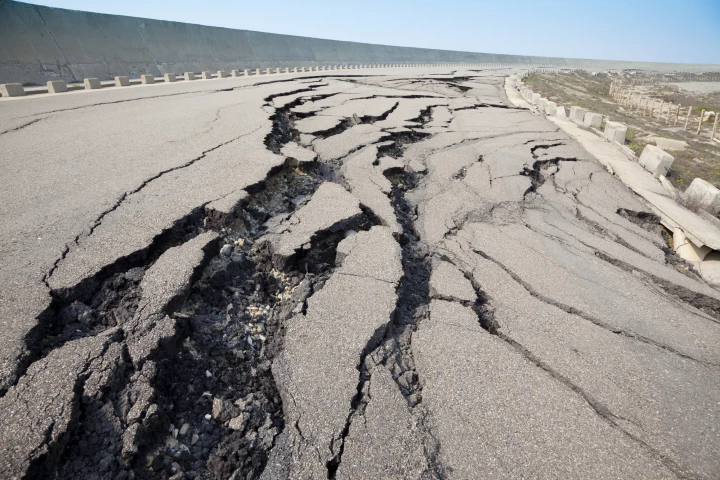Earthquake
-
Scientists have recently warned that polar ice cap melt due to climate change might just be one of our concerns as megatsunami waves can give 330-ft-plus (100-m-plus) rise to the ocean in a matter of minutes.
-
Stumbling on a giant gold nugget and never working again is something we’ve all daydreamed about, but how exactly do they form? A new experiment has found that earthquakes and electricity might be key ingredients.
-
Pompeii is famous for its uniquely pristine preservation of the daily lives of its residents 2,000 years ago. While most residents were quickly buried under volcanic ash, two newly discovered skeletons reveal unlucky people who suffered a different fate.
-
With Taylor Swift fans linked to recent seismic activity during her current worldwide 'Eras' concert tour, we thought we’d investigate how other musical artists' fans stacked up in terms of their stadium-shaking abilities. The results may surprise you.
-
NASA’s InSight listened out for seismic activity on Mars, and last year it picked up a marsquake so big it was suspected to be a meteoroid impact. Now, thanks to the cooperation of all agencies with orbiters around Mars, the source has been tracked.
-
Cosmic radio signals are beaming to Earth every day – and astronomers are stumped as to their origin. Now a new study finds evidence that these signals, known as fast radio bursts (FRBs), could be caused by “starquakes.”
-
The Earth’s inner core is incredibly tricky to study, since it’s buried beneath thousands of miles of rock. New seismic studies suggest that it’s not just a solid ball of iron, as has been assumed, but might have pockets of liquid iron throughout.
-
The mission may be defunct, but NASA’s InSight Mars lander is still discovering new things about the Red Planet. Scientists poring over data have now made the first direct observations of another planet’s core, and it’s not quite what we thought.
-
Everyone is familiar with sunken treasure on the ocean floor. Now, researchers may have found an ancient ocean floor that is itself a type of geological buried treasure. What's more, it has mountains that are five times taller than Everest.
-
NASA’s InSight has detected the strongest and longest quake on Mars so far. The event was five times more powerful than any previous marsquake, unleashing as much energy as all others combined. With the lander failing the record is unlikely to topple.
-
NASA’s InSight Mars lander has made two major new discoveries. By sensing seismic activity from the Red Planet, the craft has now detected a large meteorite impact, and found evidence of magma pools and volcanic activity still occurring today.
-
Predicting the likelihood and severity of earthquakes is important, but it’s hard to account for all factors. Researchers in New Zealand have now uncovered an overlooked factor that could affect the impact of the next big quake – tiny marine fossils.
Load More











